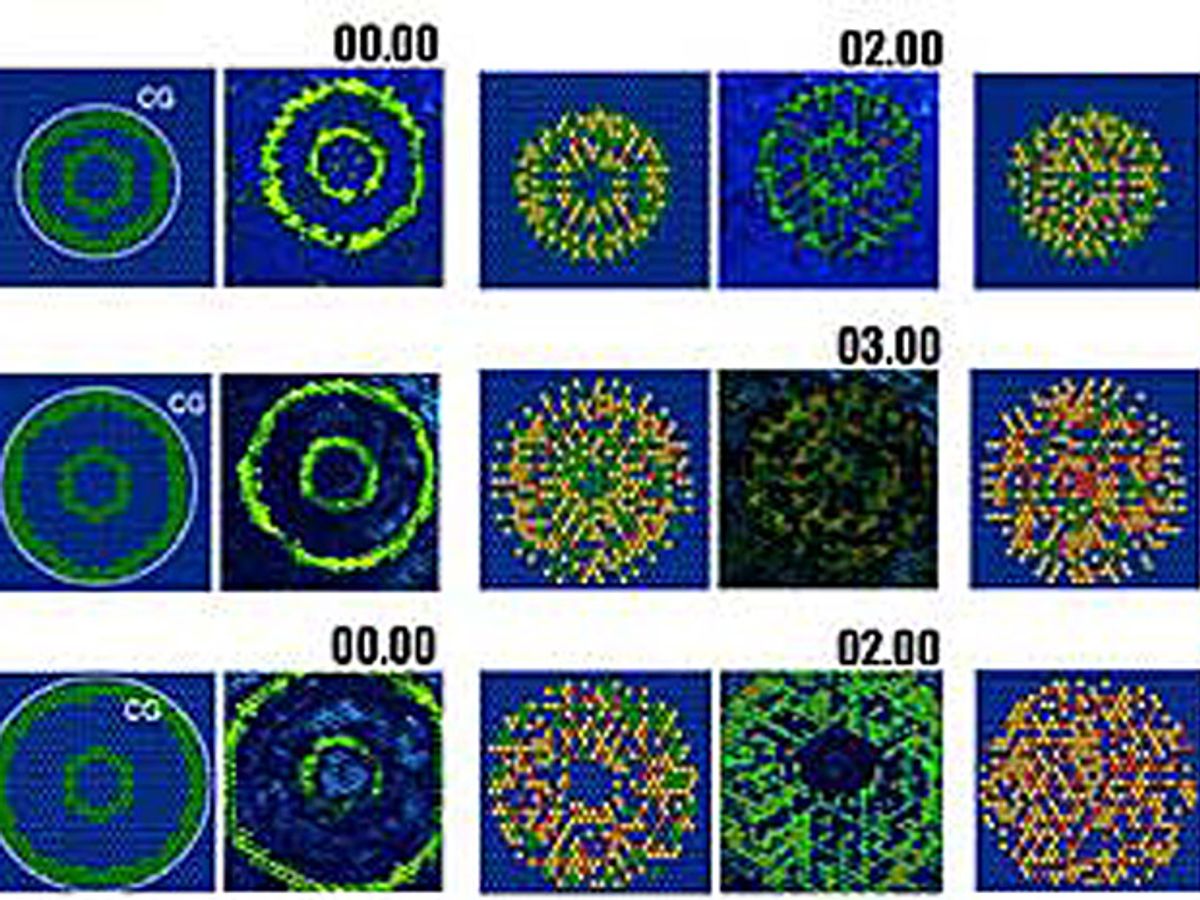18 May 2010—A team of scientists from Japan and the United States reports that it has figured out how to build a massively parallel computer-like device using organic molecules. But some experts wonder how useful it could be. The new computer, which was described in a recent issue of Nature Physics, is just a couple of molecular layers thick and mimics some aspects of the way the human brain performs calculations.
“Our objective has always been to build a computer that solves intractable problems [and to] replace complex software with hardware,” says Anirban Bandyopadhyay, the team leader and a scientist at Japan’s National Institute for Materials Science, in Tsukuba. Bandyopadhyay’s team is particularly interested in mirroring the brain’s structure to perform parallel computations—something modern computers are not well suited for but at which the human brain excels.
The average human brain has more than a hundred billion neurons, which are connected in complex networks. Typically, the collective, parallel action of millions of these neurons enables the human brain to complete certain tasks more efficiently than even the most powerful supercomputer.
In addition, the human brain has the capacity to learn through memory, both in the short term and long term. Short-term memories are formed when an increased number of molecular neurotransmitters are released at a synapse—the contact point between neurons—sending a stronger signal from one neuron to the next. Long-term memories are formed when the neurotransmitters turn on genes and create a greater number of synaptic connections, leading to a more permanent change in the brain’s wiring.
Bandyopadhyay and his colleagues sought to mimic that structure. They started with molecules of 2,3-dichloro-5,6-dicyano-p-benzoquinone, an obscure organic compound called DDQ for short. A DDQ molecule can switch reversibly among four conducting states. The researchers built the computer by depositing two layers of DDQ onto a gold surface. To encode information in the layers, the team used a scanning tunneling microscope, a tool with a nanoscopic tip that can be used to impart a slight voltage pulse; the voltages set the DDQ molecules into different conductive states.
To make a DDQ circuit that can compute, the microscope forms electronic bonds between molecules, and these bonds change over time. “Molecules rotate on the surface to break wiring with one molecule and generate wiring with another,” explains Bandyopadhyay.
The researchers encoded the device’s input bits as a pattern of conductive states in the DDQ layers. This bit pattern is unstable and will “spontaneously relax to form a new interconnecting circuit on the surface,” says Ranjit Pati, a professor of physics at Michigan Technological University who is a coauthor on the research. ”The pattern evolves over time to provide the output pattern.”
To test their parallel computer, Bandyopadhyay and his colleagues tried simulating two phenomena that occur in nature. The first was electron diffusion—the way electrons move through a material. The second was how cancer spreads in the body. Both simulations, which involved about 300 DDQ molecules each, returned excellent results, the team reports, matching each phenomenon’s known characteristics.
The ultimate goal, Bandyopadhyay says, is to create a truly brainlike computer that can tackle all sorts of problems. He says that while his team used molecules, he envisions that in the future the computer would work using algae instead of DDQ.
Several experts described the work as a bit “weird.” And none were certain how useful the technique would be outside the lab. “You have to wonder how useful a computer will be if it requires a scanning tunneling microscope to read and write the data,” says John Rogers, a professor of materials science at the University of Illinois, Urbana-Champaign.
Bandyopadhyay is undeterred, however. “More than commercial application, we are interested in exploring the hidden truths of nature using this machine,” he says.
About the Author
Saswato R. Das is a science reporter in New York City. In the March 2010 issue of IEEE Spectrum, he wrote about how Russian scientists had solved the mystery of superinsulators.
